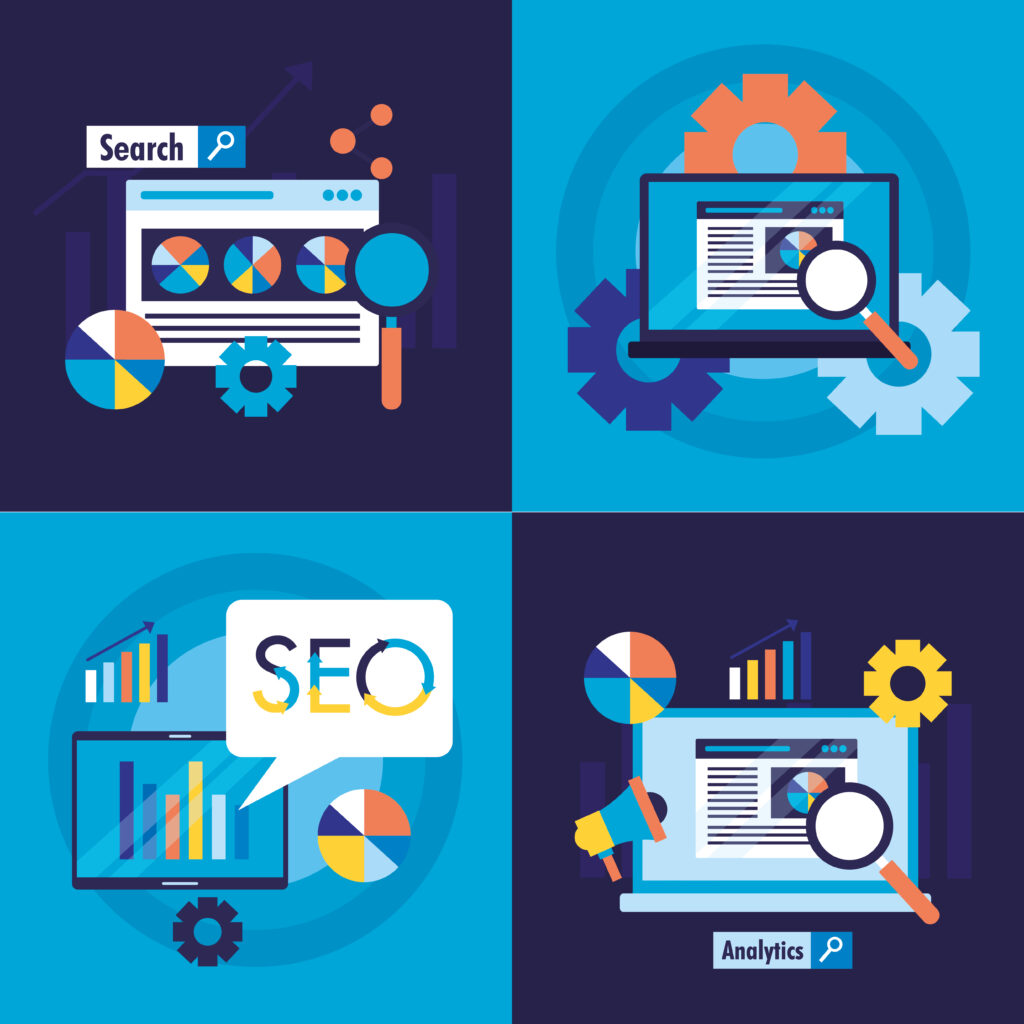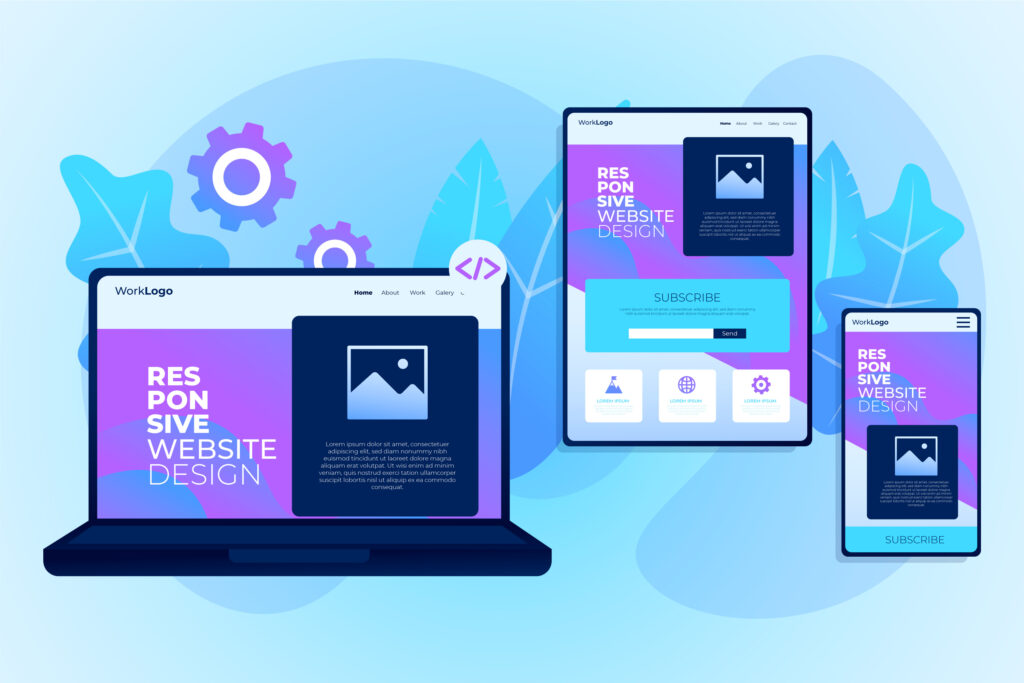What is SEO and Why It Matters?
Search engine optimization (SEO) is a crucial aspect of the success of any online marketing strategy. It involves optimizing a website to appear at the top of search engine results pages (SERPs) for specific keywords and phrases. By improving a website’s visibility in search results, businesses can attract more traffic, increase brand awareness and ultimately drive more conversions. In this article, we will explore the most common mistakes and how it influences the importance of SEO in order to maximize the effectiveness of your online presence.
Not Conducting Proper Keyword Research
The importance of keyword research
Keyword analysis is the foundation of any effective SEO strategy. It consists of identifying the most relevant and high traffic keywords related to your business or industry. Without proper keyword research, you may end up targeting the wrong audience or miss valuable opportunities to reach potential customers. If you know what keywords your target audience is searching for, you can create content that matches their needs and interests, which will improve your chances of ranking higher in search results and attract the right visitors to your website.
Tools for Effective Keyword Research
There are several keyword research tools that will help you conduct thorough keyword research. Some popular options are Google Keyword Planner, Ahrefs and SEMrush. These tools provide valuable information on search volume, competition and related keyword suggestions, allowing you to refine your SEO strategy and identify the most promising keywords to target.

Ignoring Long-Tail Keywords
Benefits of Long-Tail Keywords
While many companies focus on competitive, high-volume keywords, overlooking SEO long-tail keywords can be a missed opportunity. Long tail keywords are more specific, less competitive phrases that often have lower search volumes, but can be very valuable. By focusing on long tail keywords, you can attract a more targeted audience, increase your chances of ranking higher in search results and potentially enjoy higher conversion rates. Long-tail keywords can also help you diversify your content and reach a greater number of potential customers.
How to Find and Use Long-Tail Keywords
For long tail keyword research, you can use the same keyword research tools mentioned above, such as Google Keyword Planner and Ahrefs. These tools can provide you with a wealth of long tail keyword suggestions based on your primary keywords or your industry. In addition, you can use online tools such as Answer The Public or Long Tail Pro to generate even more long tail keyword ideas. Once you have identified your long tail keywords, make sure the long tail keywords are right for you.
Overlooking Mobile Optimization
Why Mobile Optimization is Crucial
In today’s digital landscape, where the majority of internet users access websites via mobile devices, mobile optimization has become a critical aspect of SEO. A website that is not optimized for mobile can provide a poor user experience, leading to higher bounce rates, lower engagement, and ultimately a negative impact on your search engine ranking. Search engines, such as Google, now prioritize mobile-friendly websites in their search results, making the Importance of Mobile SEO a crucial factor for any business that wants to remain competitive online.
Steps to Optimize Your Site for Mobile
To optimize your website for mobile devices, start by making sure your site has a responsive design and adapts smoothly to different screen sizes. Use tools such as Google PageSpeed Insights to identify areas for improvement, such as page load times and mobile-friendly design elements. Also, optimize your images and other multimedia elements to load faster on mobile devices, and use mobile-specific metatags and structured data to provide search engines with the necessary information about your website’s compatibility with mobile devices.

Creating Low-Quality Content
Characteristics of High-Quality Content
High-quality content is the backbone of any successful SEO strategy. It should be well-researched, engaging and informative, and provide genuine value to your target audience. Content quality factors include in-depth coverage of the topic, a clear and coherent structure, the use of relevant examples and data, and a conversational tone that resonates with the reader. By creating content that is both informative and engaging, you can establish your website as an authoritative and trusted source in your industry, which can positively impact your search engine rankings.
Strategies to Improve Content Quality
To improve your Content Quality Criteria, start by conducting extensive research on your target keywords and your audience’s information needs. Use a conversational tone and incorporate relevant images, videos, and other multimedia elements to enhance the user experience. Additionally, focus on creating long, detailed articles that cover a topic comprehensively, as search engines tend to favor content that provides substantial value to the reader.

Neglecting Meta Tags and Descriptions
Role of Meta Tags in SEO
SEO meta tags are an essential on-page component as they provide search engines with valuable information about the content of your web pages. Among the most important meta tags are the title tag and meta description, which play a crucial role in your website’s appearance in search engine results. The title tag helps search engines understand the main topic of a page, while the meta description can influence the click-through rate (CTR) of your search result by providing a brief summary of the page’s content. page.
Best Practices for Writing Meta Descriptions
When writing meta descriptions, focus on creating concise, compelling summaries that accurately reflect the content of your web page. Use relevant keywords, but avoid keyword stuffing and include a clear call to action to encourage users to click on your website. Keep your meta descriptions within the recommended length of 155 to 160 characters to ensure they are fully displayed in search results.
Ignoring User Experience (UX)
The Connection Between UX and SEO
SEO and user experience (UX) are closely intertwined. A website that provides a positive user experience is more likely to rank higher in search engine results, as search engines prioritize websites that offer a smooth and engaging experience for their users. . Factors such as page load times, navigation, and overall design can significantly affect both user satisfaction and search engine rankings. By focusing on improving the user experience of your website, you can not only improve your SEO but also increase the likelihood that visitors will engage with your content and become customers.
Tips to Enhance User Experience
To improve user experience, start by making sure your site loads quickly and is easy to navigate. Use clear, concise language throughout your content and provide relevant images, videos, and other multimedia elements to break up the text and make your pages more visually appealing. Also, optimize your website for mobile devices, as a responsive and mobile-friendly design is crucial to providing a seamless user experience on all devices.
Not Utilizing Internal Linking
Benefits of Internal Linking
Internal linking SEO is a powerful technique that can help search engines better understand the structure and hierarchy of your website. By creating strategic links between your web pages, you can distribute link equity, improve user experience, and enhance the overall authority of your site. Internal links can also help search engines discover and index your content more effectively, improving visibility in search results.
Effective Internal Linking Strategies
To leverage internal linking effectively, start by creating a clear, logical hierarchy of your website pages. Use descriptive anchor text that accurately reflects the content of the linked page and avoid generic phrases like “click here.” Additionally, use tools like Ahrefs or SEMrush to identify internal linking opportunities, such as related content or pages that could benefit from additional links, so you can gain internal linking best practices.

Skipping Image Optimization
How Images Impact SEO
Images can have a significant impact on your website’s SEO performance. Well-optimized images can improve user engagement, improve the visual appeal of your content, and even help speed up page load times. Search engines also use image-specific signals, such as file names and alt text, to understand the context and importance of SEO images on your website. By optimizing your images, you can improve your overall SEO and provide a more engaging experience for your visitors.
Techniques for Proper Image Optimization
For image optimization for SEO, start by using descriptive file names that include relevant keywords. Additionally, provide accurate and informative alt text that describes the content of the image. Compress your images to reduce file size without compromising quality, as large image files can slow down your website’s loading speed. Tools like TinyPNG or ShortPixel can help you optimize your images efficiently.
- Choose the Right Format: Select the appropriate image format based on the content and quality requirements:
- Use JPEG for photographs or images with lots of colors.
- Use PNG for images with transparency or simple graphics.
- Use SVG for vector images and logos (scalable without loss of quality).
- Resize Images: Scale images to the correct dimensions needed on your website. Large images can slow down loading times significantly.
- Compress Images: Reduce the file size of images without sacrificing too much quality:
- Use tools like Adobe Photoshop, GIMP, or online tools like TinyPNG or JPEG Optimizer.
- Aim for a balance between file size and image quality.
- Optimize Alt Text: Use descriptive and relevant alt text for each image to improve accessibility and SEO. Alt text should be concise yet informative.
- Lazy Loading: Implement lazy loading for images that are below the fold (not visible immediately), so they load only when the user scrolls to them. This speeds up initial page load times.
- Responsive Images: Use responsive design techniques to serve appropriately sized images based on the user’s device and screen size (e.g., srcset attribute in HTML).
- Image Metadata: Remove unnecessary metadata from images (e.g., GPS coordinates, camera settings) to reduce file size.
- CSS Sprites: Combine small images into a single image sprite to reduce HTTP requests and load times.
- Use CDN: Serve images through a Content Delivery Network (CDN) to take advantage of caching and faster delivery to users around the world.
- Image Lazy Loading: Implement lazy loading to ensure that images below the fold only load when the user scrolls down.
Overlooking Analytics and Adjustments
Importance of Monitoring SEO Performance
Regularly SEO performance tracking is crucial to identifying areas for improvement and making informed decisions about your marketing strategy. By tracking key metrics like organic traffic, conversion rates, and keyword rankings, you can gain valuable insights into the effectiveness of your SEO efforts and make adjustments accordingly. Continually analyzing your website’s performance and adapting your strategy based on the data can help you achieve better results and stay ahead of the competition.
Tools and Techniques for Analytics
To analyze your SEO performance, use powerful SEO analytics tools like Google Analytics and SEMrush. These platforms provide a wealth of data and insights that allow you to track your website traffic, conversion rates, and keyword rankings over time. By monitoring these metrics, you can identify which content and strategies resonate with your audience and make informed decisions about where to focus your efforts for maximum impact.
Focusing Solely on On-Page SEO
Understanding Off-Page SEO
While on-page SEO, which involves optimizing the content and structure of your website, is crucial for improving your search engine rankings, off-page SEO is equally important. Off-page SEO refers to the activities and strategies you employ outside of your website to build its authority and reputation. This includes activities such as link building, guest blogging, and improving your overall online presence. By focusing on both on-page and off-page SEO, you can create a well-rounded and effective SEO strategy that can help your website rank higher and attract more targeted traffic.
Effective Off-Page SEO Strategies
To strengthen your off-page SEO, focus on building high-quality backlinks from reputable and relevant websites. This can be achieved through tactics such as guest blogging, broken link building, and leveraging resource pages. Additionally, you can improve your website’s online presence by actively engaging with your target audience on social media, participating in industry forums, and creating a strong brand identity. By combining these off-page SEO techniques with your on-page optimization efforts, you can create a comprehensive SEO approach that can help your website stand out in search engine results.
Conclusion
Recap of Common SEO Mistakes
In conclusion, avoiding common SEO mistakes is crucial for optimizing your website’s performance and improving its online visibility. By conducting proper keyword research, leveraging long-tail keywords, and prioritizing mobile optimization, you can lay a strong foundation for your SEO strategy. Additionally, creating high-quality content, optimizing meta tags and descriptions, and enhancing user experience can further boost your search engine rankings. Regularly monitoring your SEO performance and adjusting your strategy accordingly, as well as focusing on both on-page and off-page SEO, can help you achieve sustainable success in the ever-evolving world of search engine optimization.
Final Tips for Avoiding SEO Pitfalls
To avoid these common SEO mistakes and ensure the success of your SEO strategy, follow these final tips:
- Conduct Regular Keyword Research: Continuously monitor your keyword rankings and adjust your strategy to target more relevant and high-traffic keywords.
- Optimize for Mobile: Ensure your website is responsive and loads quickly on mobile devices to improve user experience and search engine rankings.
- Create High-Quality Content: Focus on creating well-researched, engaging, and informative content that provides value to your audience and establishes your authority in your industry.
- Use Meta Tags and Descriptions Effectively: Optimize your meta tags and descriptions to provide search engines with accurate information about your content and improve your click-through rates.
- Prioritize User Experience: Focus on creating a responsive and user-friendly website that provides a seamless experience for your visitors and improves your search engine rankings.
- Use Internal Linking Strategically: Use internal linking to improve the structure and hierarchy of your website and distribute link equity to relevant pages.
- Optimize Images for SEO: Use descriptive file names and alt tags, compress images to reduce file size, and use tools like TinyPNG or ShortPixel to optimize images without compromising quality.
- Monitor SEO Performance: Continuously monitor your SEO performance using tools like Google Analytics and SEMrush, and adjust your strategy accordingly to improve your search engine rankings and drive more traffic to your website.
- Focus on Both On-Page and Off-Page SEO: Balance your on-page SEO efforts with off-page SEO strategies like link building and content marketing to improve your website’s authority and reputation.
- Stay Up-to-Date with SEO Best Practices: Continuously educate yourself on the latest SEO best practices and algorithm updates to stay ahead of the competition and ensure the success of your SEO strategy.
By following these final tips and avoiding common SEO pitfalls, you can improve your website’s search engine rankings, drive more traffic to your website, and achieve your online marketing goals.
